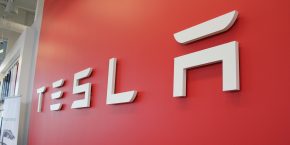

As expected, Tesla announced a new Model S 60 today with a starting price point of $66,000 before Federal Tax in the US, under $60K after the $7500 tax credit. But Tesla really didn’t release a new car today – the company released a new software configuration and pricing model. That small change will let the automaker sell a lot more cars…
You see, the 60kWh Tesla Model S you buy on Tesla’s website or from a retail location isn’t any different than a standard Model S 75kWh that you could buy yesterday – from a hardware perspective. Tesla simply will sell you the car at a $8500 discount and software lock on 20% of the battery power of the car. But! You can later unlock the car’s extra 20% of battery if you give Tesla that $8500 (plus $500 more as a sort of late/delivery fee).
There are a lot of things to consider here. Yes, this is an unprecedented move in the automotive industry but it is something Tesla has experimented with in the past. Tesla ran a smaller 5kWh upgrade program as it switched from 70kWh battery packs to 75kWh last month but if you are looking for this type of scale, it ran a similar program with the little known Model S 40kWh car it cancelled in early 2013.
I was one of a handful of buyers of that car. For those who don’t remember, it was offered at launch for $49,000 at base model after Federal Tax incentives. I snapped it up as a slight upgrade to the $42,000 Chevy Volt we’d specced out. But in March 2013, right before 40kWh owners were to start receiving their cars, Tesla gave us some amazing news: we’d be getting 60kWh battery cars that were software limited to 40kWh. Just like today’s announcements, a lot of caveats but the good far outweighed the bad. Let me break it down into the Good news/bad news groupings:
The good news:
100% of 60kWh day to day: People with 75kWh with access to only 60kWh battery packs can charge their cars every day to full without hurting their batteries. Tesla recommends that on a day to day basis Model S only fill your batteries to about 90% full. This prolongs the life of the battery and is something that every Tesla owner does. On the rare long trip you can fill to 100% but the car will warn you every time that you are hurting your battery. But if you have an extra 20% of battery idle like these new 60kWh configs, you can fill it to 100% every day. That’s 210 miles vs. the under 180 that a normal S 60 driver has and 30 more miles of real world usage every day.
More speed! Acceleration and performance of the new Model S 60 and 60D is improved; the 0-60 time for Model S 60 and 60D is now 5.2 and 5.5 seconds, respectively. That’s a very speedy base model and likely but unconfirmed power increase due to being able to access more power in the bigger pack. Top speed is also the same at the 75kWh battery, not the previous 60kWh.
Supercharging speed will increase. Bigger packs charge quicker. That’s just math (Energy is distributed evenly throughout the pack when Supercharging so slightly higher energy density levels allow for slightly higher charging rate). You really have a 75kWh pack so you’ll get noticeably faster times at the Supercharging stations. I can’t say for sure how much faster but it will be noticeable.
Badges? Yes, you’ll get a stinking badge upgrade. Tesla tells us:
Upon choosing to unlock the additional range, customers will receive a new badge applied to their car at their next service appointment.
You can upgrade whenever you want. I was on a long trip with my 40kWh and finally decided the extra range would make my drive back so much easier. I called Tesla and within a half hour they removed the barrier over the air and my car was now a 60kWh. The trip back with supercharging was much quicker and less range anxious.
Taxes/Incentives: The cost of the car “hardware” did drop significantly here. If you purchase the upgrade even upon delivery with the $500 extra fee, you are paying for an “upgrade” to your car even if that is a $9000 line of code worth of electrons pushed over the air. That has many tax and EV incentive implications, not just in the US, for this upgrade and others.
The bad news:
No takebacks! The upgrade is permanent and once upgraded customers cannot downgrade back to the 60 kWh range. I would like to do an upgrade just for long trips but Tesla tells me this is a one time only and permanent thing. Bummer, but understandable.
Title doesn’t get an upgrade. If you upgrade, your Model S will have a new badge but on your car’s title it will say 60kWh. Most second hand buyers will realize this is an actual benefit (the battery pack wouldn’t have been pushed as hard/mile). But Telsa sales reps told me my original but upgraded S40 was worth less than a regular S60 as a trade in because the title said S40. I imagine some customer education would help in this case.
Weight (sort of). This is a hypothetical because there is no longer a 60kWh battery pack in existence to compare it to. But if there were a 60kWh pack, it would obviously be lighter and smaller than the 75kWh in this car. Therefore you’d think the bigger battery would slow it down and use more power. However, the 60kWh-governed 75kWh car still has a faster 0-60, top speed and range. So the point is moot.
Takeaway
The ability to buy extra battery storage that lives dormant inside your car is a big, big deal. It has never been done before on any other vehicle though I guess you could put a gas can in your ICE car’s trunk but that’s really another thing entirely. The point here is that we have a new paradigm. Tesla makes this as easy as possible with hardly any downside.
I think Tesla believes that enough people will upgrade during the life of their car that the price drop is worth it. Additionally, when most people end their lease or sell their car back to Tesla or trade it in, Tesla can simply update the car before it sells it or leases it again, recouping the additional value at that point. The $8500 drop in price point will bring a lot more people into the Tesla fold ahead of the Model 3 launch. In fact, it might pull some people out of line.
Featured Image: Insights into the Tesla Model 3’s aero innovations and how it can achieve 215 miles of range
FTC: We use income earning auto affiliate links. More.



Comments